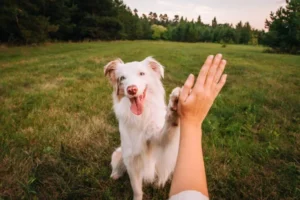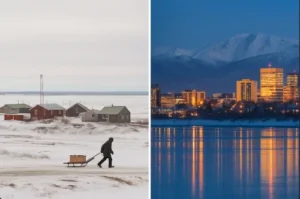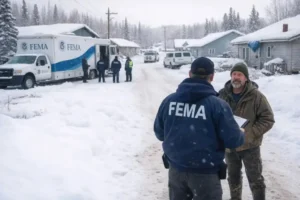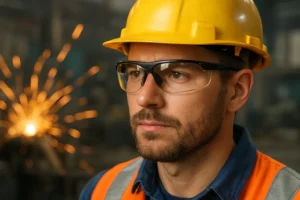If you’ve ever lived in rural Alaska, you know that getting medical care isn’t as simple as driving to a clinic. In many villages, the nearest hospital might be hundreds of miles away, separated by rivers, tundra, and mountain ranges. For thousands of families, healthcare access means relying on small community clinics, medevac flights, and telemedicine.
Even with these efforts, rural Alaskans continue to face deep-rooted barriers, but you’ll also find inspiring examples of innovation and resilience across the state.
The Reality of Healthcare in Rural Alaska
Alaska’s geography is unlike anywhere else. Around 60% of the state’s Indigenous population lives in small villages of 20 to 1,700 people, spread across nearly 1.5 million square kilometers. Most of these communities can’t be reached by road; they depend on planes, boats, or snowmachines for travel.
If you’ve ever had to fly from your village to Anchorage or Fairbanks for care, you know how costly and disruptive that journey can be. Between airfare, lost wages, and days away from subsistence activities like hunting or fishing, the expense goes far beyond the medical bill.
Research shows 13.2% of rural Alaska Native people report transportation as a major barrier to healthcare, almost three times the rate of rural white residents. For many, that means delaying or skipping treatment.
The Challenge of Too Few Providers

You might be surprised to learn that in 2021, rural Alaska had only 86 physicians per 100,000 residents, compared to 198 per 100,000 in urban areas.
In some boroughs, there are no doctors at all. Many small communities rely entirely on community health aides for primary care and emergency response.
The shortage is only getting worse as older doctors retire and recruitment to remote areas becomes harder. When one provider leaves, entire regions can lose access to consistent care.
The High Cost of Medical Care
Even when you can reach a hospital, the cost of healthcare in Alaska is significantly higher than the national average.
Specialists in Alaska earn 2.5 times more than those in the lower 48, and providers overall are paid 76% above national rates.
For patients, that means higher bills. Major Alaska cities report healthcare costs 47–51% higher than the national average, with Fairbanks topping the list at 51.5% above average.
Add the costs of travel and treatment housing, and rural healthcare becomes financially overwhelming for many families.
Limited Specialty Care and Delayed Treatment
Because advanced care is concentrated in Anchorage and other urban centers, rural residents often face long waits.
Pregnant women from remote villages sometimes have to relocate weeks before their due date just to ensure a safe delivery, a stressful experience that separates them from family and work.
When specialized equipment or trained staff aren’t available locally, delays can lead to serious complications. It’s not uncommon for patients to postpone treatment simply because getting to a specialist is too hard.
Mental Health and Substance Use Gaps
Mental health remains one of Alaska’s biggest healthcare challenges. About 20% of Alaskans experience a mental health condition every year, and 15% struggle with substance use disorders.
If you live in a rural area, the nearest behavioral health clinic might be hundreds of miles away. Providers face heavy workloads, 80% report high stress, and many facilities are underfunded.
This lack of access contributes to higher rates of suicide and addiction in remote communities, where social support and clinical resources are scarce.
Aging and Underfunded Health Facilities
Even where clinics exist, many operate in old or inadequate buildings.
The Alaska Tribal Health System estimates $459 million in maintenance needs and $4.4 billion for new or replacement facilities.
Village clinics alone need $1.6 billion in upgrades, yet the Village Built Clinic program currently receives just 63% of the funding required to operate safely.
That means many health aides are working in outdated, cramped, or even unsafe conditions, limiting the quality and continuity of care.
Community-Driven Solutions That Work

1. The Community Health Aide/Practitioner (CHA/P) Program
This is Alaska’s most successful rural healthcare model. Started in the 1950s and formalized by the Indian Health Service in 1968, the program now includes over 550 trained aides serving 178 remote villages and managing more than 250,000 clinical encounters each year.
If you’ve ever visited your village clinic, there’s a good chance a CHA/P was your first point of contact. These professionals handle everything from emergency care to chronic disease management, all for an average cost of just $900 per patient annually.
Because they’re from the same communities they serve, they understand local customs and challenges, building trust and ensuring culturally appropriate care.
2. Telemedicine and Digital Health Networks
Alaska is a world leader in telehealth innovation. The Alaska Federal Health Care Access Network (AFHCAN), founded in 1999, connects 248 health sites, including 158 village clinics, through satellite-based technology.
Instead of traveling to the city, patients can now share test results, images, and case summaries with specialists in Anchorage within hours.
During long winters when the weather shuts down travel, telemedicine saves time, money, and even lives.
Programs like Project ECHO also help local clinicians gain specialist training and mentorship through live online sessions.
3. Expanding Behavioral Health Aides
To address mental health needs, the state is growing its Behavioral Health Aide (BHA) workforce.
As of 2025, about 268 BHAs work alongside community health aides, trained through the Alaska Native Tribal Health Consortium (ANTHC).
Organizations like Southcentral Foundation are transforming behavioral care by bringing therapy, crisis support, and addiction counseling directly to villages.
Communities using this model report fewer crises and less stigma surrounding mental health because care happens at home, not hundreds of miles away.
4. Relationship-Based Care Models
Southcentral Foundation’s Nuka System of Care is a powerful example of what happens when healthcare focuses on relationships.
Serving 65,000 Alaska Native and American Indian people across 55 rural villages, Nuka connects local health aides and nurse practitioners with urban providers through secure digital systems.
When someone in a village needs advanced care, their providers coordinate directly with hospitals in Anchorage, ensuring no one falls through the cracks.
5. New Federal Opportunities: The Rural Health Transformation Program
The newly enacted One Big Beautiful Bill Act (OBBBA) offers hope for the future.
Through the Rural Health Transformation Program, $50 billion will be invested nationally over the next five years to improve rural healthcare.
Alaska is expected to receive a significant share to support technology upgrades, workforce training, and chronic disease prevention.
If approved, the funding could help modernize rural clinics and strengthen telehealth systems statewide.
Persistent Barriers That Still Need Fixing
Even with progress, systemic problems remain.
The Indian Health Service (IHS) receives just $8 billion in funding despite national tribal budget recommendations of $73 billion.
That massive gap trickles down to staffing shortages, underfunded tribal clinics, and limited access to basic care.
Meanwhile, Alaska’s physician workforce is aging, with many nearing retirement, and nationwide, rural doctor numbers dropped by 5% (2,500 doctors) between 2019 and 2024.
Without policy reform and sustained investment, progress will be slow to reach the communities that need it most.
Looking Ahead
If you live in rural Alaska, you already know the strength it takes to care for your community despite distance, weather, and limited resources.
Programs like CHA/P and telemedicine prove that local innovation works, but long-term change requires infrastructure, funding, and workforce growth.
The new Rural Health Transformation Program offers real potential, but it will take steady commitment from both state and federal levels.
With the right support, rural Alaskans can finally have access to the same quality of care as anyone else without needing to leave home to get it.
FAQs
1. What are the biggest healthcare challenges in rural Alaska?
Rural Alaskans face limited road access, provider shortages, and high medical costs. Long travel distances and harsh weather make timely care difficult.
2. How do people in remote Alaska villages get medical treatment?
Most rely on local community health aides and telemedicine links with urban hospitals. Medevac flights handle emergencies requiring advanced care.
3. What is the Community Health Aide Program in Alaska?
It’s a statewide network of over 550 trained aides providing essential medical services in 178 villages, offering affordable, culturally aligned care.
4. How does telemedicine improve healthcare access in Alaska?
Telehealth connects rural clinics to specialists in Anchorage and beyond. It saves travel costs, reduces delays, and ensures faster diagnoses year-round.
5. What steps are being taken to improve rural healthcare in Alaska?
Programs like the Rural Health Transformation Program and workforce expansion aim to modernize clinics, train more providers, and strengthen local care.












